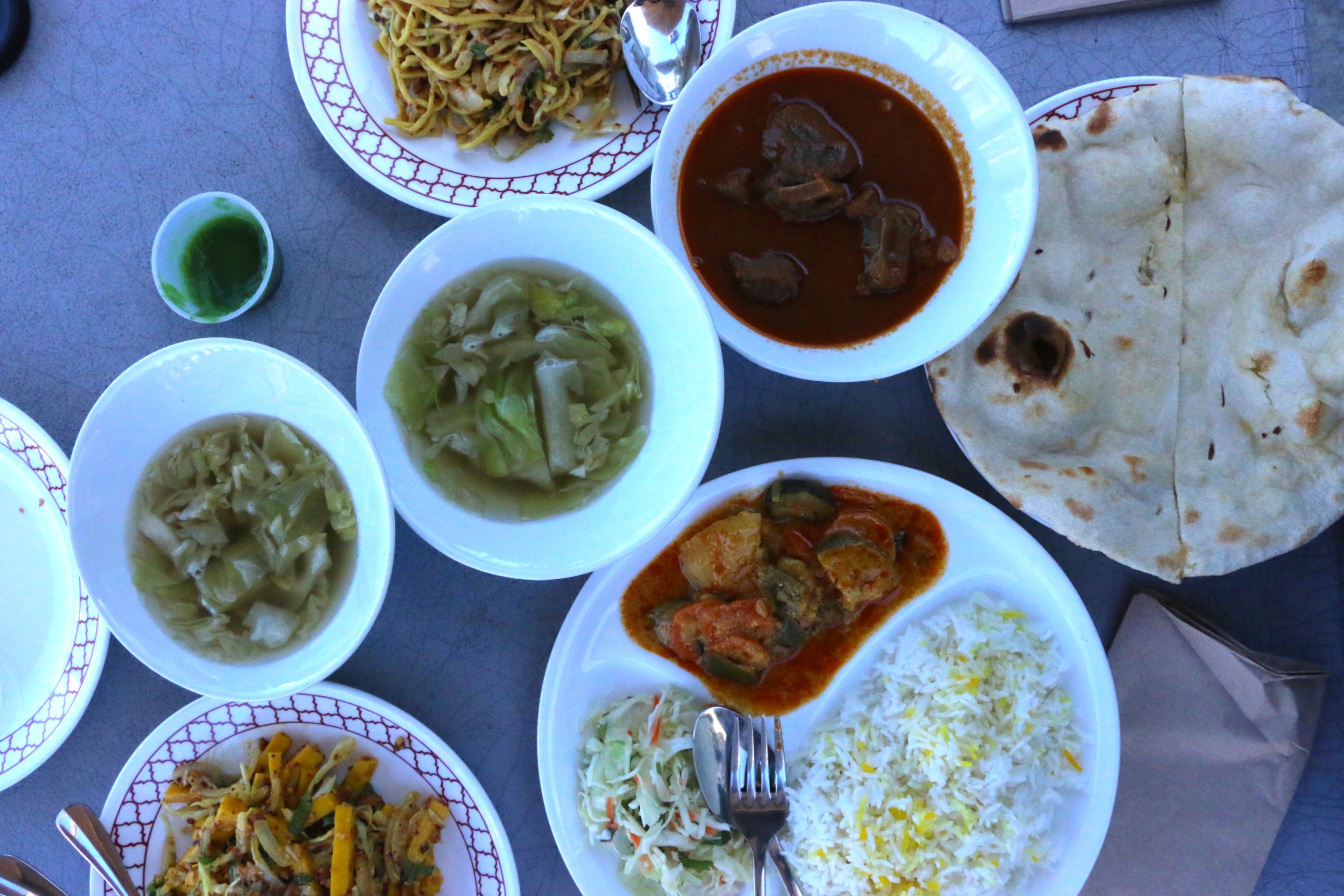[dropcap size=big]I[/dropcap]nside a stucco strip mall on La Brea Avenue in Inglewood, survivors of an ongoing ethnic-cleansing campaign half a world away eat at a nondescript restaurant named Mutiara: “Authentic Asian Halal Food.”
Steaming chicken curry, coconut noodle soup, and bowls of communal rice bring the group together. All are members of the Rohingya, a Muslim minority ethnic group in the Southeast Asian nation of Myanmar. The men have settled in West L.A. after fleeing persecution in their mostly-Buddhist home country.
The Rohingya gather at Mutiara, a place not even explicitly identified as Burmese, because they know it will serve up something few other places can — authentic halal Burmese food, like something straight out of a sidewalk tea shop in downtown Yangon.
Ko Ko Naing, a founding member of the Los Angeles Rohingya Society who became a U.S. citizen in 2010, goes at least twice a month, even if the restaurant is a bit out of his way. “Best spot to relax,” Ko Ko Naing says.
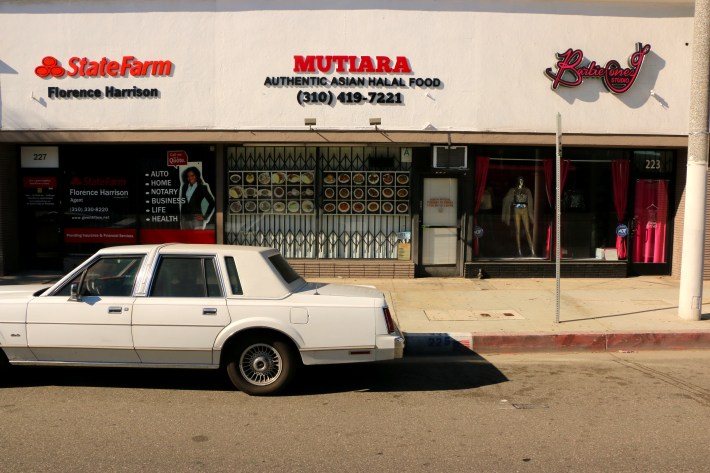
In the United States, it’s hard to find Burmese food prepared according to Islamic custom. I know because I’ve searched for the stuff ever since moving to Los Angeles from the downtown Muslim quarter of Yangon, Myanmar’s largest city. I lived and worked there from 2015 to 2017.
Residents in my Yangon neighborhood were largely the descendants of Muslims who immigrated during the country’s colonial period. Many of the mossy brick buildings on my street bore inscriptions of prominent Indian merchant families who arrived after Britain made Myanmar an Indian province in 1866.
Ethnic violence between Buddhist and Muslim neighbors has flared up.
Seventy years after the British left Burma, downtown Yangon’s food stalls still reflect Indian and Islamic influences as much as its architecture. Vendors sell fried gourd and fat, oily potato samosas, often round the corner from tea shops with chewy, naan-like paratha (pronounced pa-lah-tha) and hearty, halal goat curries. Mohinga, the national breakfast staple of fish soup, stews in massive vats on the sidewalks, and is ubiquitous across coastal Myanmar no matter the local religion.
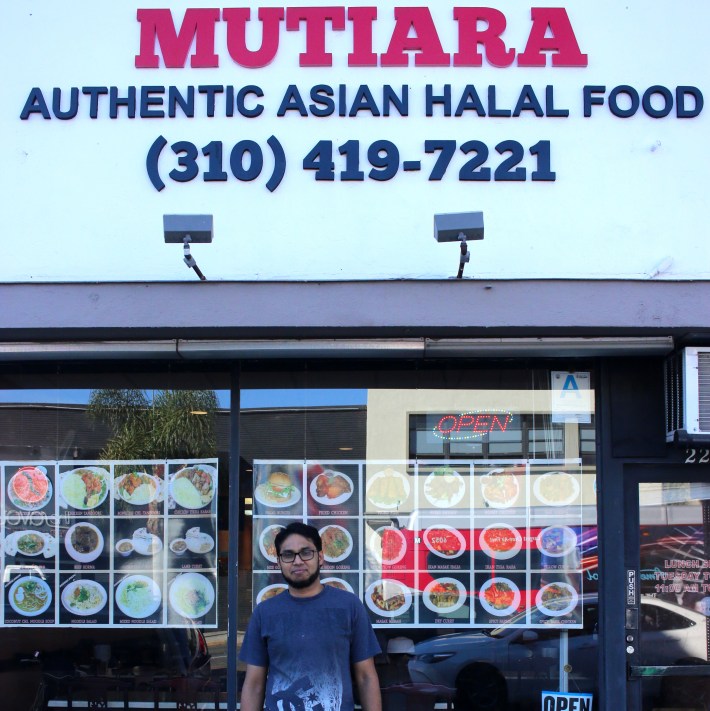
[dropcap size=big]I[/dropcap]f you’ve read any news about Myanmar lately, it may seem as if local religion is all that matters. The Rohingya Muslims in the country’s northwest have made international headlines in recent years as the world’s most persecuted ethnic group — in large part because of their faith.
Despite a long history of Islamic settlers in the region, Myanmar’s government considers its population of over a million Rohingya to be illegal immigrants from Bangladesh, denying them citizenship. Ethnic violence between Buddhist and Muslim neighbors has flared up repeatedly in the past few years, most recently in August, when Rohingya militants responded to their own marginalization with deadly attacks on Burmese police posts.
The Tatmadaw, Myanmar’s military, has carried out a scorched earth campaign in retaliation. About three quarters of a million Rohingya people — mostly women and children — have fled across Myanmar’s border into Bangladesh in the last 10 months, and medical organizations estimate at least 7,000 have died. Some United Nations officials have even used the word “genocide.”
‘Where even is Burma?’
At the core of the vitriol is a strain of Myanmar nationalism, which views Muslims as a threat to the Buddhist majority. Even in America, Rohingya have described feeling persecuted by fellow Myanmar immigrants, sometimes by Buddhists who themselves have fled the notorious Tatmadaw.
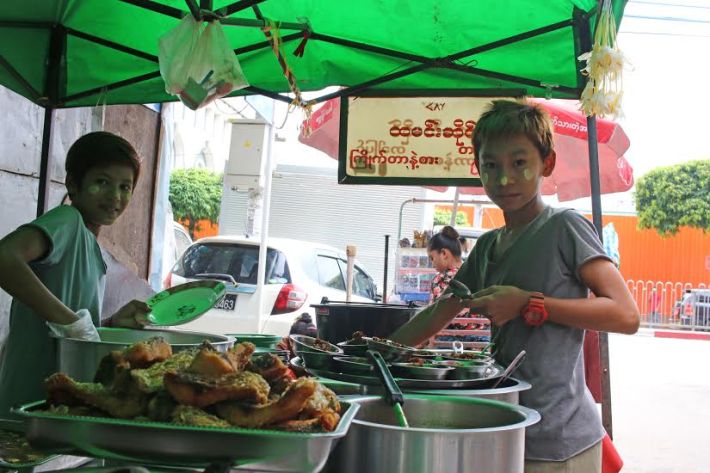
For the Rohingya who’ve resettled in Los Angeles, there’s a plethora of trendy Burmese joints offering a taste from home. But while restaurants like Silver Lake’s Daw Yee Myanmar Corner and YOMA Myanmar in Monterey Park serve up delicious examples of other types of Burmese food, none of it quite nails the spice and texture of food prepared in the hole-in-the-wall mom and pop shops on Myanmar’s busiest urban streets.
That’s one reason why Myanmar immigrant and restaurateur Myo Aung opened Mutiara. Myo Aung says he introduced halal Burmese food to Los Angeles.
“Here, when we took it, people say, ‘what does it mean, halal?’ They don’t know,” he says to me, laughing over a cup of hot la paye yae milk tea at Mutiara, during a lull between dining rushes. “Now people know.”
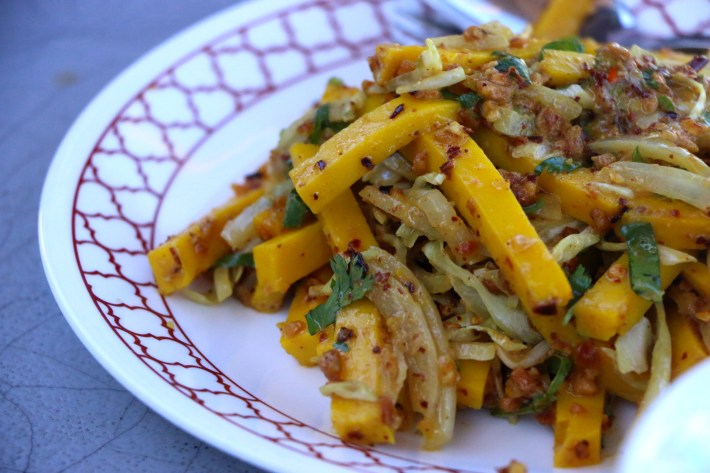
Myo Aung grew up a few blocks from where I lived in downtown Yangon. He left Myanmar during military rule back in 1997 on a student visa. After settling into the Muslim Burmese community in Culver City, he studied business at El Camino College. In 2002, he opened a restaurant in the area called Jasmine Market with his brother-in-law.
Back then, he said mohinga or khao swe was hard to find in Southern California. Burmese food had yet to have its U.S. “moment” — in fact, Myo Aung quickly learned to rename some of his dishes to fit in with food people did know: the Burmese “paratha” became the Indian “naan.”
“When we started Jasmine, a lot of people said, ‘Where even is Burma?’ They don’t know,” Myo Aung says. “At that time, Burma was not famous like now.”
[dropcap size=big]A[/dropcap]fter selling Jasmine Market to another Myanmar man — who has since sold it to a third — Myo Aung relocated to cheaper rent in Inglewood and started Mutiara in 2007. Over the last decade he’s built a steady stream of regulars that includes policemen, taxi drivers, immigrant families and Rohingya.
The restaurant’s printed menu lists a mix of Malaysian and Indian food, but on weekends Myo Aung reveals his roots by serving up Muslim Burmese cuisine.

Ko Naing says he and his fellow Rohingya living in L.A. appreciate Mutiara because it a comfortable place for them. There’s Islamic prayers hung on the walls, and you’re liable to see imams sipping tea or a young mother in a hijab with her children.
“It is hard to find a halal food [spot] that serves authentic Burmese and trustworthy halal,” Ko Naing says. “Halal food is growing in LA but it’s not easy to find a [Burmese] family style halal food.”
The group also frequents Jasmine Market, where Myo Aung’s fellow Myanmar national Aung Kyaw Oo and his wife, a British woman of Indian descent named Fatima Bholat, still follow the same halal recipes developed by Myo Aung and his family 16 years ago.
Samosas at Jasmine Market
[dropcap size=big]T[/dropcap]o this day, the menu-board Myo Aung designed and installed himself hangs at the La Brea Avenue spot. Jasmine remains the only place in L.A. serving the flavor-packed, Yangon street-style samosas I crave the most since leaving Myanmar (Mutiara stopped serving them last year).

Bholat told me on a recent Tuesday afternoon that, despite inter-religious tension in her husband’s home country, “all kinds” of people come to Jasmine to try Muslim Burmese food: the most popular include marinated tofu salad and chicken biryani to rival any Yangon establishment.
Having visited Myanmar for the first time last year, Bholat added that she’s eager to introduce more menu items to reflect the foods she encountered on its streets. She said pe pyot, a salted pea breakfast dish commonly served at tea shops there, could be on the horizon soon.
In the meantime, Jasmine Market will continue serving up the food it knows best. Together with Mutiara, the two restaurant advertise themselves as a mix of Southeast Asian foods, but if you visit either one on a weekend you can find out the truth about L.A.’s Muslim Myanmar food scene for yourself.
The proof is in the paratha.
RELATED: ‘Taco Trucks at Every Mosque’: How Halal Tacos Are Uniting Latinos and Muslims
